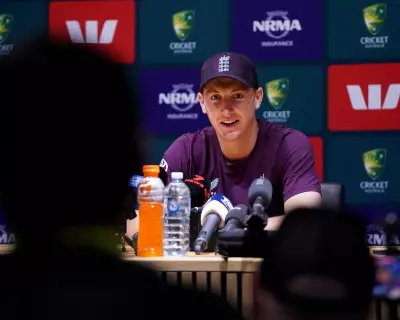
In a London derby that laid bare the fundamental flaws in Ange Postecoglou's system, Chelsea emerged as 2-0 victors through a performance that combined brutal physicality with tactical precision. While Tottenham's approach appeared confused and disjointed, the Blues executed their game plan with ruthless efficiency.
The Crash Tackle King Rules Midfield
Cole Palmer delivered a masterclass in controlled aggression, dominating the midfield battle with a performance that combined technical quality with physical imposition. The young midfielder completed more tackles and interceptions than any other player on the pitch, effectively shutting down Tottenham's creative outlets while initiating Chelsea's most dangerous attacks.
His opening goal exemplified Chelsea's approach - winning possession through determined pressing before converting with clinical precision. This set the tone for a match where Chelsea's physical superiority became increasingly apparent as the minutes ticked by.
Tottenham's Identity Crisis Laid Bare
For Tottenham, this defeat raised serious questions about their tactical identity under Postecoglou. The team appeared caught between their manager's commitment to attacking football and the practical realities of competing against physically dominant opponents.
The defensive vulnerabilities that have plagued Spurs throughout the season were ruthlessly exposed by Chelsea's direct approach. Time and again, Tottenham's high defensive line was breached by simple balls over the top, while their midfield struggled to cope with Chelsea's intense pressing.
System Failure or Personnel Problems?
Postecoglou's post-match comments suggested systemic issues rather than individual failures. "When the system doesn't function as intended, every player looks isolated," he noted, pointing to broader structural problems rather than blaming specific performers.
However, the statistics told a damning story: Tottenham were second-best in duels won, tackles completed, and aerial battles throughout the match. This physical deficit undermined their attempts to implement their preferred style of play.
Chelsea's Blueprint for Success
Mauricio Pochettino's Chelsea demonstrated a clear understanding of how to exploit Tottenham's weaknesses. Their game plan focused on:
- High-intensity pressing to disrupt Tottenham's build-up play
- Direct attacking transitions to bypass the midfield battle
- Physical dominance in key areas of the pitch
- Clinical finishing when opportunities arose
This comprehensive approach left Tottenham with few answers and highlighted the gap between the two sides in terms of tactical flexibility.
What Next for Both Clubs?
For Chelsea, this victory represents another step in their development under Pochettino, demonstrating they can win through different means against quality opposition. The performance of Palmer in particular suggests they have found their midfield general for the seasons ahead.
Tottenham, meanwhile, face difficult questions about whether their commitment to a single style of play needs modification against physically imposing opponents. The coming weeks will test whether Postecoglou can adapt his system without compromising its core principles.
As the Premier League season progresses, this match may be remembered as the moment Chelsea established their credentials as genuine top-four contenders, while Tottenham were forced to confront the limitations of their current approach.





